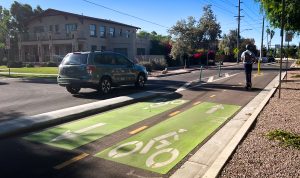You may have noticed emptier streets and less congested highways following last year’s stay-at-home orders, but unfortunately less people behind the wheel hasn’t made roadways safer in the Unities States. In fact, even with a 13% drop in miles driven, traffic crashes, fatalities and speeding tickets all went up during the first half of 2020. Last year, roadway fatalities reached their highest point since 2007 according to preliminary data by the National Safety Council.
Investigating traffic fatalities in your state or county can lead to interesting stories beyond your basic trend piece. Here are some tips:
Understanding the impact
Vehicle crashes and fatalities are not only personal tragedies, they’re also extremely costly for families, employers and communities. The safety council study estimated that the cost of motor vehicle fatalities, injuries and property damage in 2020 was $474.4 billion. A single traffic fatality can cost $1.4 million in lost productivity at home and on the job, according to The National Highway Traffic Safety Administration. In fact, vehicle crashes are the number one cause of on-the-job fatalities in the United States. The story of America’s increasingly fatal roadways is one at the intersection of public safety, infrastructure and business一a meaty and worthwhile topic for business journalists to explore.
Getting the right information
Unfortunately, finding up-to-the-minute data related to vehicle crashes isn’t easy, and some states and municipalities do a better job than others in making data accessible. For statewide data, check out your motor vehicle department. Information may be available on their site, but it’s often out of date. You may need to contact the department’s public records office. For data specific to your city or town, try contacting the appropriate police department. If all else fails, it may be useful to follow your state’s department of transportation on social media, where crashes are often reported, to get a sense if roadways are more dangerous than years past. In the absence of official statistics, it’s also worth a try calling your state’s transportation department spokesperson or PIO and asking about roadway conditions overall.
Once you receive the information you’re looking for, it’s important to interpret that data in a way that makes sense. Certain months are historically worse for crashes than others (oddly enough, the worst month for traffic fatalities is September). To accurately compare crash data, you want to calculate the percent change from the same month in different years. For example, how many crashes happened in your community in April 2020 versus April 2019?
Investigating the causes
There’s more to the story than reckless driving. Surveys of trauma centers show that an increasing number of people involved in serious vehicle accidents are impaired by alcohol alcohol, cannabis and opioids. That tracks with separate studies showing the overall increase in drug and alcohol use during the pandemic. It’s possible a sharp uptick in crashes could point to elevated substance use in your area, which is often correlated with economic downturn and deaths of dispair.
Tips for reporters
Analyze the data. Find traffic statistics using methods described above, and see if you have a story. Don’t assume roadway conditions have worsened in your area just because they have nationally. Let the data speak for itself. It’s also a good idea to have a second pair of eyes on the numbers, especially with complicated data sets.
Talk to people on the ground. Try to get in touch with people who live close to busy roadways for anecdotes. Ask if they’ve seen an increase in crashes and listen to what they have to say. The best articles blend statistics with a compelling human element.
Find out if lawmakers are responding. Check government websites for meetings and read the agendas. Issues of importance to public safety may be on the docket for your local city council, or state legislature. Even if you’re unsure the meeting will be relevant, it’s a good idea to go anyways. Dull government meetings often produce the most interesting stories even if it doesn’t turn out like you expected. Due to COVID-19, government meetings are often live streamed for remote viewing.










